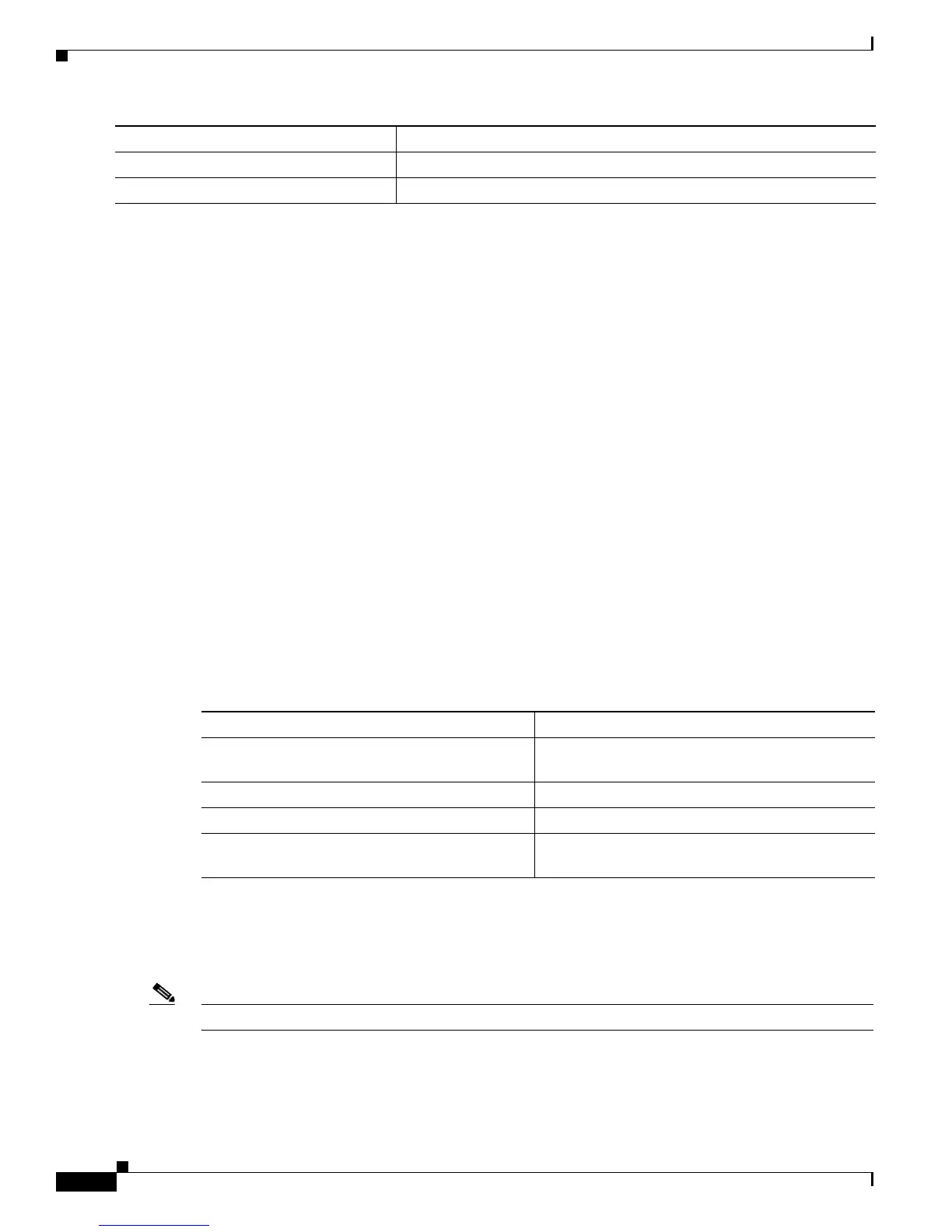42-46
Cisco ME 3400 Ethernet Access Switch Software Configuration Guide
OL-9639-07
Chapter 42 Configuring IP Multicast Routing
Monitoring and Maintaining IP Multicast Routing
To remove the boundary, use the no ip multicast boundary interface configuration command.
This example shows how to set up a boundary for all administratively-scoped addresses:
Switch(config)# access-list 1 deny 239.0.0.0 0.255.255.255
Switch(config)# access-list 1 permit 224.0.0.0 15.255.255.255
Switch(config)# interface gigabitethernet0/1
Switch(config-if)# ip multicast boundary 1
Monitoring and Maintaining IP Multicast Routing
• Clearing Caches, Tables, and Databases, page 42-46
• Displaying System and Network Statistics, page 42-46
• Monitoring IP Multicast Routing, page 42-47
Clearing Caches, Tables, and Databases
You can remove all contents of a particular cache, table, or database. Clearing a cache, table, or database
might be necessary when the contents of the particular structure are or suspected to be invalid.
You can use any of the privileged EXEC commands in Table 42-6 to clear IP multicast caches, tables,
and databases:
Displaying System and Network Statistics
You can display specific statistics, such as the contents of IP routing tables, caches, and databases.
Note This release does not support per-route statistics.
You can display information to learn resource utilization and solve network problems. You can also
display information about node reachability and discover the routing path your device’s packets are
taking through the network.
Step 7
show running-config Verify your entries.
Step 8
copy running-config startup-config (Optional) Save your entries in the configuration file.
Command Purpose
Ta b l e 42-6 Commands for Clearing Caches, Tables, and Databases
Command Purpose
clear ip igmp group [group-name |
group-address | interface]
Delete entries from the IGMP cache.
clear ip mroute {* | group [source]} Delete entries from the IP multicast routing table.
clear ip pim auto-rp rp-address Clear the Auto-RP cache.
clear ip sdr [group-address | “session-name”] Delete the Session Directory Protocol Version 2
cache or an sdr cache entry.

